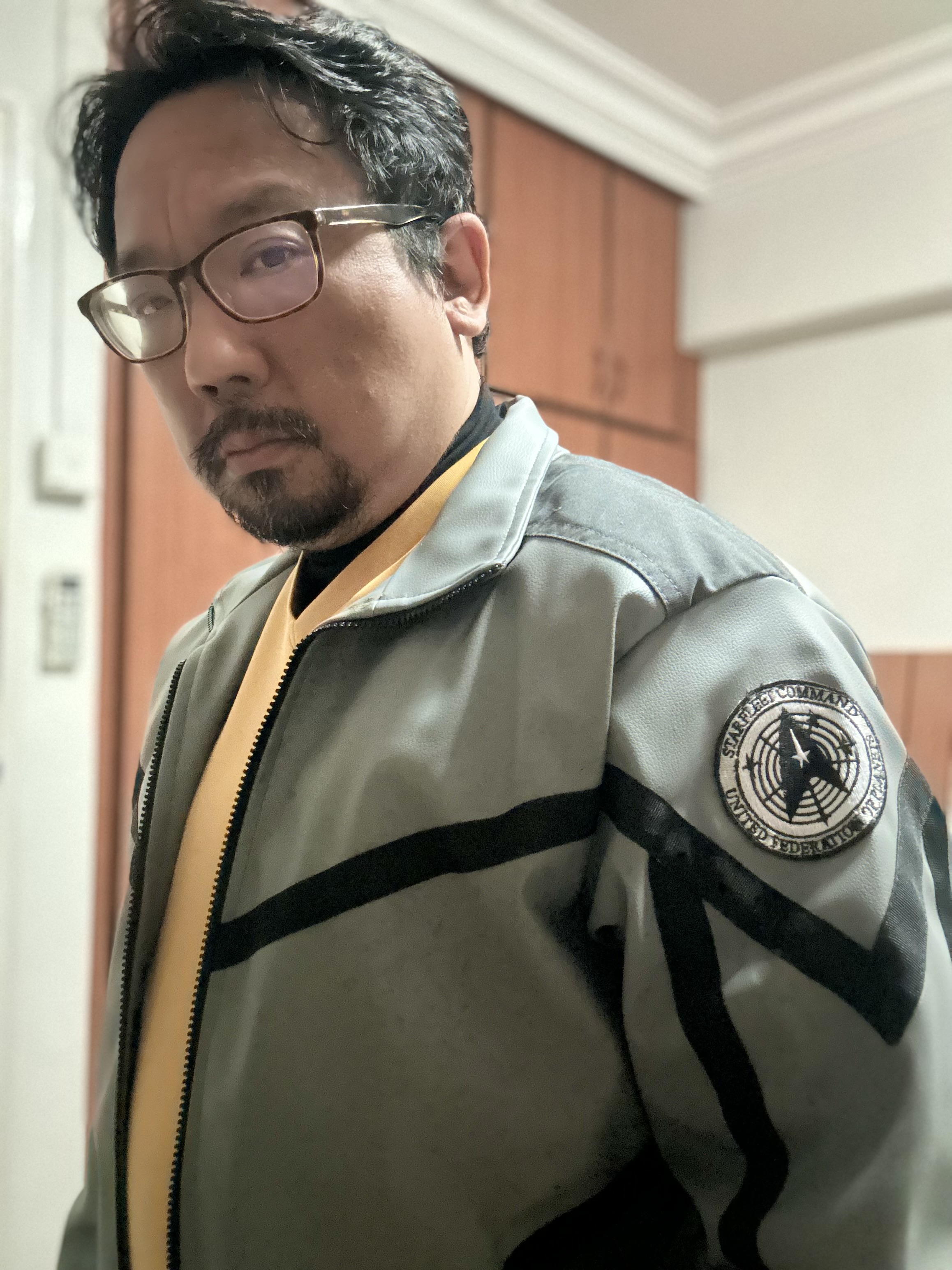Ensign Gamble identifies himself as a “junior medical officer”, not a nurse, but the two may be equivalent. The stardate is 2184.4, and it has been six months since he was assigned to Enterprise. Since Gamble came on board to sub for Chapel while she was away on her three-month fellowship with Korby, this places the episode six months after SNW: “Hegemony, Part 2” or three months after SNW: “Wedding Bell Blues”.
Gamble mentions Korby’s work on “molecular memory and corporeal transference”, and that “man’s fascination with resurrection and reincarnation might be based on forgotten technology” foreshadows the android technology Korby will discover on Exo III (TOS: “What Are Little Girls Made Of?”).
Chapel asks how much “tarazine” is lethal. I’m not sure if she meant “thorazine”, which is a real world antipsychotic. Chapel jokes about “command function” being in the “left lobe [of the brain]”. The frontal lobe is where higher executive functions are regulated, and the left hemisphere controls speech, comprehension, math and writing.
Vadia IX was first mentioned in “Wedding” as where Korby and Chapel conducted a dig, and Trelane’s remarks imply it was the ancient homeworld of the Q.
According to the star chart, Vadia is in the same sector as Majalis (SNW: “Lift Us Where Suffering Cannot Reach”) and a sector away from Eminiar (TOS: “A Taste of Armageddon”) and Cait (home system of the Caitians), and about 100 ly away from Gorn space. It is under the jurisdiction of the M’Kroon, who have their first mention here.
Beto Ortegas first appeared in “Wedding”, but was mentioned prior to that in the SNW novel Toward the Night by James Swallow. As I noted previously, Beto is usually a nickname in Spanish for names that end in -berto, and we find out here his actual first name is Humberto.
“We’re gonna need a bigger landing party,” is a reference to the famous line, “You’re gonna need a bigger boat,” from the 1975 movie Jaws.
Polaris is also known as the North Star, the brightest star in the constellation Ursa Minor (or the Little Dipper), but we are unaware if it has any planets, let alone twelve. This is the first mention of Praetorian. La’An says, “Fascinating,” which is a phrase Spock often uses - Chapel seems to notice this.
“Ancient astronauts” is a reference to a dubious (not to mention racist) yet popular hypothesis in real-world ufology, where it is posited that aliens with advanced technology visited Earth in the past and left traces of their visits, including objects like the Pyramids or Stonehenge which proponents of this theory argue could not have been built by primitive man without help. In the Star Trek universe, however, aliens have visited more primitive cultures and either influenced them and/or been mistaken for deities. We have TOS: “Who Mourns for Adonais” where aliens are taken to be gods by the ancient Greeks and TOS: “Return to Tomorrow” where Sargon suggests humans are the descendants of Aretans. In TNG: “The Chase” (and DIS Season 5), much humanoid life throughout the galaxy is said to be seeded by the Progenitors. In TNG: “Who Watches the Watchers?”, Picard is mistaken for a god by the Mintakans.
“El Cucuy”, or Coco (meaning “skull”) is a mythical Spanish boogeyman, a monster who spirits naughty children away and eats them. The Ortegas family is from Colombia (SNW: “Among the Lotus Eaters”).
I’m not sure why the Universal Translator doesn’t pick up on N’Jal’s speech here and nobody seems to question it. Was N’Jal’s earlier speech translated or was he speaking Federation Standard, and if the latter, why doesn’t he speak it here? Uhura says her intepretation is the “closest translation”, so perhaps the UT somehow doesn’t want to be imprecise?
La’An translates the Chinese text as “Here stands the beholder sentry of eternal bridges.”The Chinese text reads, in traditional Chinese script, “這裡矗立著永恆之穚的旁觀者哨兵,” which I would translate (from Mandarin) as “Here stands the eternal bridge’s sentry.”
Korby’s challenge to Spock, that the latter does not believe that the science exists to prevent consciousness from fading after death is ironic considering the Vulcan (or at least the Syrannite sect) belief in the existence of katras and Spock’s future experience with that (ENT: “Kir’Shara”, ST III).
Rukiya was M’Benga’s terminally ill daughter which he placed in the care of a non-corporeal life form (SNW: “The Elysian Kingdom”). Gamble’s remark about the entity that emerged possibly just being something bearing Rukiya’s appearance and that it ate her echoes my own doubts about the ending of that episode. Thank you!
Scotty sends the orb “nowhere”. The idea of using the transporter to dematerialize but not rematerialize threats was first mooted by a crazed Chekov in TOS: “Day of the Dove” in reference to leaving a party of Klingons dematerialized. In TOS: “Wolf in the Fold” they beamed Redjac’s host body away, dispersing its components into space, but here they decide to keep the Vezda in the transporter buffer like M’Benga did to Rukiya to keep her alive (SNW: “Ghosts of Ilyria”).
What exactly the Vezda life forms are is not made explicit, but the fact that they are ancient, malign, non-corporeal entites draws parallels with beings like the pah-wraiths from DS9 (also, N’Jal says “Mika-tah Vezda-pah”, as does Batel when she sees Gamble). Also, what the connection between the Gorn and the Vezda (or indeed if there is a further connection with the Q) is as yet unexplored. And why there was Chinese on the console.
The containment orbs (although not for prison purposes) for ancient non-corporeal forms also remind me of the Aretan orbs in TOS: “Return to Tomorrow”.
And as the episode ends we finally have the now late Gamble’s first name: Dana.

